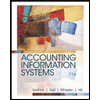
MANAGERIAL ACCOUNTING-CONNECT >CUSTOM<
17th Edition
ISBN: 9781265133627
Author: Garrison
Publisher: MCG
expand_more
expand_more
format_list_bulleted
Concept explainers
Textbook Question
Chapter 7.A, Problem 3E
EXERCISE 7A-3 Time-Driven Activity-Based Costing LO 7-6, LO 7-7
Refer to the data in Exercises 7A-1 and 7A-2. Now assume that Saratoga Company would like to answer the following “what if’ question using its time-driven activity-based costing system: Assuming our estimated activity demands for all jobs in the next period will be as shown below, how will this affect our

Required:
- How will these revised activity demands affect the total Purchasing Department labor costs assigned to Job X, Job Y, and Job Z? No calculations are necessary
- Using the revised activity demands, calculate Saratoga's used capacity in minutes.
- Using the revised activity demands, calculate Saratoga's unused capacity in minutes.
- Using the revised activity demands, calculate Saratoga’s unused capacity in number of employees. (Do not round your answer to a whole number.)
- Based on the revised activity demands, calculate the impact on expenses of matching capacity with demand. (Be sure to round your potential adjustment in the number of employees to a whole number.)
Expert Solution & Answer
Want to see the full answer?
Check out a sample textbook solution
Students have asked these similar questions
On May 31, 2026, Oriole Company paid $3,290,000 to acquire all of the common stock of Pharoah Corporation, which became a
division of Oriole. Pharoah reported the following balance sheet at the time of the acquisition:
Current assets
$846,000
Current liabilities
$564,000
Noncurrent assets
2,538,000
Long-term liabilities
470,000
Stockholder's equity
2,350,000
Total assets
$3,384,000
Total liabilities and stockholder's equity
$3,384,000
It was determined at the date of the purchase that the fair value of the identifiable net assets of Pharoah was $2,914,000. At
December 31, 2026, Pharoah reports the following balance sheet information:
Current assets
$752,000
Noncurrent assets (including goodwill recognized in purchase)
2,256,000
Current liabilities
(658,000)
Long-term liabilities
(470,000)
Net assets
$1,880,000
It is determined that the fair value of the Pharoah division is $2,068,000.
On May 31, 2026, Oriole Company paid $3,290,000 to acquire all of the common stock of Pharoah Corporation, which became a
division of Oriole. Pharoah reported the following balance sheet at the time of the acquisition:
Current assets
$846,000
Current liabilities
$564,000
Noncurrent assets
2,538,000
Long-term liabilities
470,000
Stockholder's equity
2,350,000
Total assets
$3,384,000
Total liabilities and stockholder's equity
$3,384,000
It was determined at the date of the purchase that the fair value of the identifiable net assets of Pharoah was $2,914,000. At
December 31, 2026, Pharoah reports the following balance sheet information:
Current assets
$752,000
Noncurrent assets (including goodwill recognized in purchase)
2,256,000
Current liabilities
(658,000)
Long-term liabilities
(470,000)
Net assets
$1,880,000
It is determined that the fair value of the Pharoah division is $2,068,000.
The following transactions involving intangible assets of Oriole Corporation occurred on or near December 31, 2025.
1.) Oriole paid Grand Company $520,000 for the exclusive right to market a particular product, using the Grand name and logo in promotional material. The franchise runs for as long as Oriole is in business.
2.) Oriole spent $654,000 developing a new manufacturing process. It has applied for a patent, and it believes that its application will be successful.
3.) In January 2026, Oriole's application for a patent (#2 above) was granted. Legal and registration costs incurred were $247,800. The patent runs for 20 years. The manufacturing process will be useful to Oriole for 10 years.
4.) Oriole incurred $168,000 in successfully defending one of its patents in an infringement suit. The patent expires during December 2029.
5.) Oriole incurred $446,400 in an unsuccessful patent defense. As a result of the adverse verdict, the patent, with a remaining unamortized cost of…
Chapter 7 Solutions
MANAGERIAL ACCOUNTING-CONNECT >CUSTOM<
Ch. 7.A - EXERCISE 7A-1 Time-Driven Activity-Based Costing...Ch. 7.A -
EXERCISE 7A-2 Time-Driven Activity-Based Costing...Ch. 7.A - EXERCISE 7A-3 Time-Driven Activity-Based Costing...Ch. 7.A - PROBLEM 7A-4 Time-Driven Activity-Based Costing LO...Ch. 7.A - PROBLEM 7A-5 Time-Driven Activity-Based Costing LO...Ch. 7 - Prob. 1QCh. 7 - Prob. 2QCh. 7 - Prob. 3QCh. 7 - What are unit-level, batch-level, product-level,...Ch. 7 - What types of costs should not be assigned to...
Ch. 7 - What are the two stages off allocation in...Ch. 7 - Why is the first stage of the allocation process...Ch. 7 - When activity-based costing is used, why do...Ch. 7 - Prob. 9QCh. 7 - Why is the form of activity-based costing...Ch. 7 - The Excel worksheet form that appears below is to...Ch. 7 - Prob. 2AECh. 7 - The Excel worksheet form that appears below is to...Ch. 7 - Prob. 1F15Ch. 7 - Prob. 2F15Ch. 7 - Prob. 3F15Ch. 7 - Prob. 4F15Ch. 7 - Prob. 5F15Ch. 7 - Prob. 6F15Ch. 7 - Prob. 7F15Ch. 7 - Prob. 8F15Ch. 7 - Prob. 9F15Ch. 7 - Prob. 10F15Ch. 7 - Prob. 11F15Ch. 7 - Prob. 12F15Ch. 7 - Prob. 13F15Ch. 7 - Prob. 14F15Ch. 7 - Prob. 15F15Ch. 7 - Prob. 1ECh. 7 - Prob. 2ECh. 7 - Prob. 3ECh. 7 - Prob. 4ECh. 7 - Prob. 5ECh. 7 - Prob. 6ECh. 7 - EXERCISE 7-7 First-Stage Allocations LO7-2
The...Ch. 7 - Prob. 8ECh. 7 - Prob. 9ECh. 7 - Prob. 10ECh. 7 - Prob. 11ECh. 7 - Prob. 12ECh. 7 - EXERCISE 7-13 Computing ABC Product Costs LO7-3,...Ch. 7 - Prob. 14ECh. 7 - Prob. 15ECh. 7 - Prob. 16PCh. 7 - Prob. 17PCh. 7 - Prob. 18PCh. 7 - Prob. 19PCh. 7 -
PROBLEM 7-20 Evaluating the Profitability of...
Knowledge Booster
Learn more about
Need a deep-dive on the concept behind this application? Look no further. Learn more about this topic, accounting and related others by exploring similar questions and additional content below.Similar questions
- Reffering to fair value of an asset, division, or organization, What exactly is fair value and how is it assessed?arrow_forwardThe following transactions involving intangible assets of Oriole Corporation occurred on or near December 31, 2025. 1.) Oriole paid Grand Company $520,000 for the exclusive right to market a particular product, using the Grand name and logo in promotional material. The franchise runs for as long as Oriole is in business. 2.) Oriole spent $654,000 developing a new manufacturing process. It has applied for a patent, and it believes that its application will be successful. 3.) In January 2026, Oriole's application for a patent (#2 above) was granted. Legal and registration costs incurred were $247,800. The patent runs for 20 years. The manufacturing process will be useful to Oriole for 10 years. 4.) Oriole incurred $168,000 in successfully defending one of its patents in an infringement suit. The patent expires during December 2029. Oriole incurred 5.) $446,400 in an unsuccessful patent defense. As a result of the adverse verdict, the patent, with a remaining unamortized cost of…arrow_forwardNonearrow_forward
- I need help solving this general accounting question with the proper methodology.arrow_forwardI need help with this general accounting question using the proper accounting approach.arrow_forwardPlease provide the correct answer to this general accounting problem using valid calculations.arrow_forward
- Can you explain the correct methodology to solve this general accounting problem?arrow_forwardCan you solve this general accounting question with the appropriate accounting analysis techniques?arrow_forwardCan you solve this general accounting problem using appropriate accounting principles?arrow_forward
arrow_back_ios
SEE MORE QUESTIONS
arrow_forward_ios
Recommended textbooks for you
- Principles of Accounting Volume 2AccountingISBN:9781947172609Author:OpenStaxPublisher:OpenStax College
 Managerial Accounting: The Cornerstone of Busines...AccountingISBN:9781337115773Author:Maryanne M. Mowen, Don R. Hansen, Dan L. HeitgerPublisher:Cengage Learning
Managerial Accounting: The Cornerstone of Busines...AccountingISBN:9781337115773Author:Maryanne M. Mowen, Don R. Hansen, Dan L. HeitgerPublisher:Cengage Learning Essentials of Business Analytics (MindTap Course ...StatisticsISBN:9781305627734Author:Jeffrey D. Camm, James J. Cochran, Michael J. Fry, Jeffrey W. Ohlmann, David R. AndersonPublisher:Cengage Learning
Essentials of Business Analytics (MindTap Course ...StatisticsISBN:9781305627734Author:Jeffrey D. Camm, James J. Cochran, Michael J. Fry, Jeffrey W. Ohlmann, David R. AndersonPublisher:Cengage Learning  Cornerstones of Cost Management (Cornerstones Ser...AccountingISBN:9781305970663Author:Don R. Hansen, Maryanne M. MowenPublisher:Cengage Learning
Cornerstones of Cost Management (Cornerstones Ser...AccountingISBN:9781305970663Author:Don R. Hansen, Maryanne M. MowenPublisher:Cengage Learning Accounting Information SystemsFinanceISBN:9781337552127Author:Ulric J. Gelinas, Richard B. Dull, Patrick Wheeler, Mary Callahan HillPublisher:Cengage Learning
Accounting Information SystemsFinanceISBN:9781337552127Author:Ulric J. Gelinas, Richard B. Dull, Patrick Wheeler, Mary Callahan HillPublisher:Cengage Learning

Principles of Accounting Volume 2
Accounting
ISBN:9781947172609
Author:OpenStax
Publisher:OpenStax College

Managerial Accounting: The Cornerstone of Busines...
Accounting
ISBN:9781337115773
Author:Maryanne M. Mowen, Don R. Hansen, Dan L. Heitger
Publisher:Cengage Learning

Essentials of Business Analytics (MindTap Course ...
Statistics
ISBN:9781305627734
Author:Jeffrey D. Camm, James J. Cochran, Michael J. Fry, Jeffrey W. Ohlmann, David R. Anderson
Publisher:Cengage Learning

Cornerstones of Cost Management (Cornerstones Ser...
Accounting
ISBN:9781305970663
Author:Don R. Hansen, Maryanne M. Mowen
Publisher:Cengage Learning

Accounting Information Systems
Finance
ISBN:9781337552127
Author:Ulric J. Gelinas, Richard B. Dull, Patrick Wheeler, Mary Callahan Hill
Publisher:Cengage Learning
Cost Classifications - Managerial Accounting- Fixed Costs Variable Costs Direct & Indirect Costs; Author: Accounting Instruction, Help, & How To;https://www.youtube.com/watch?v=QQd1_gEF1yM;License: Standard Youtube License